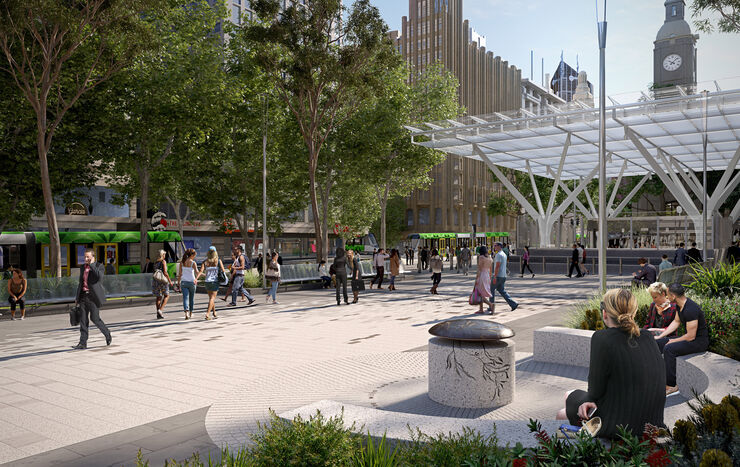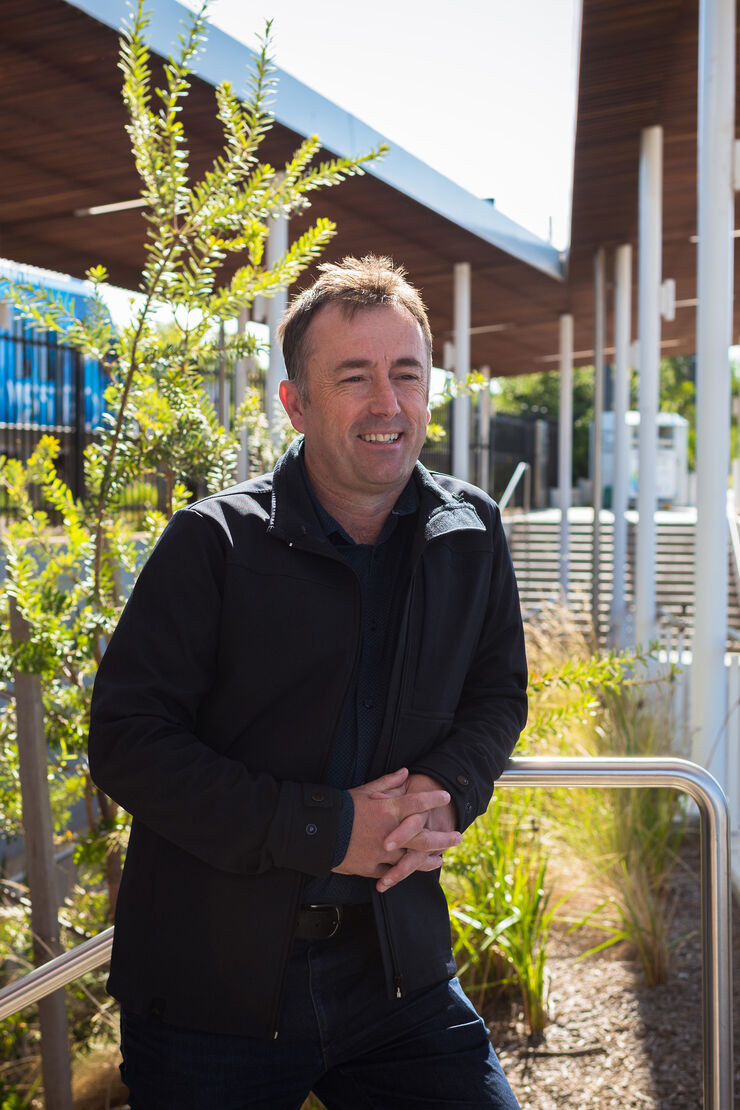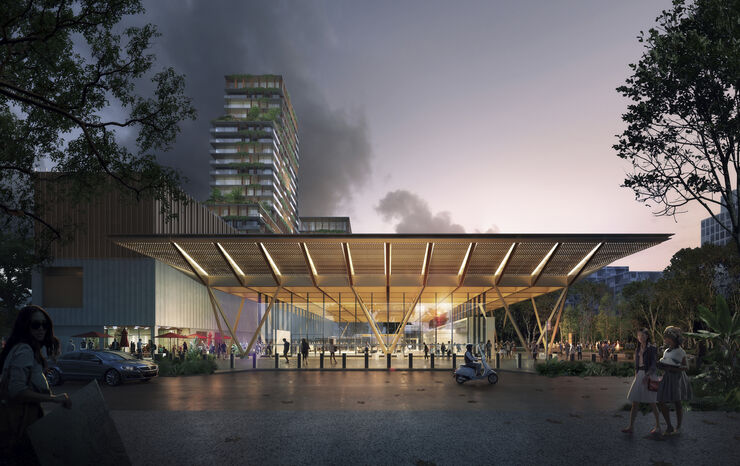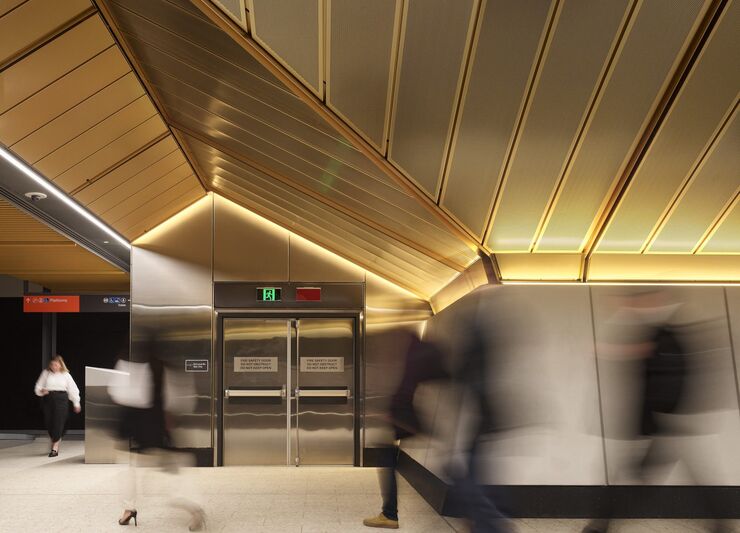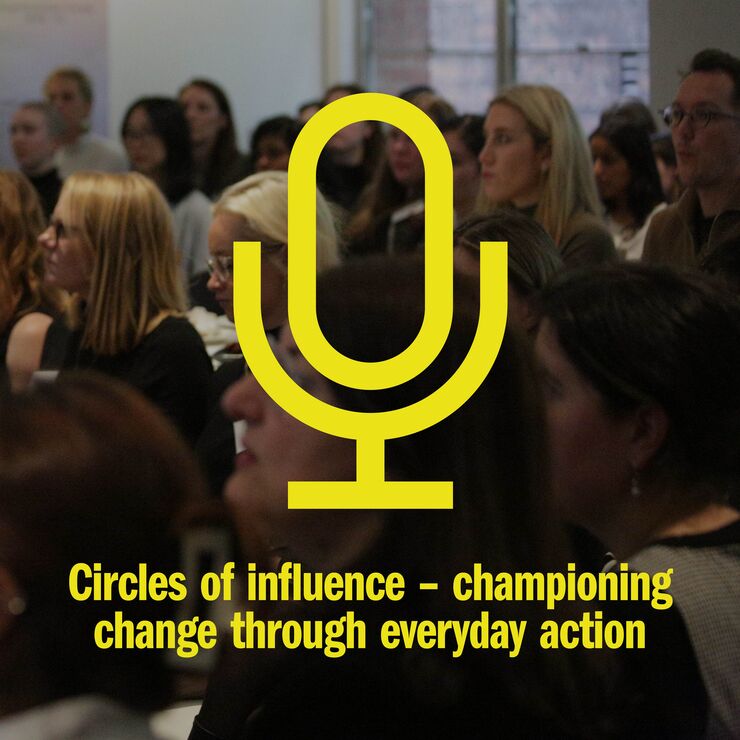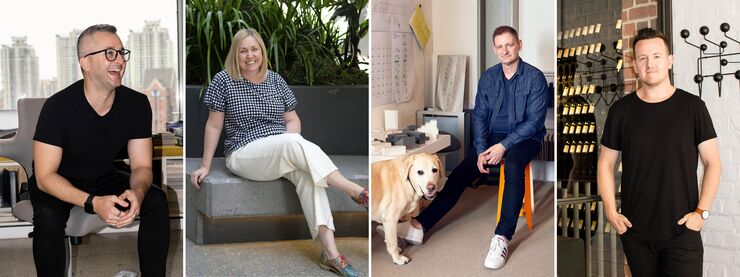Transcript
Alix Smith:
From Hassell, an award-winning architecture and design practice, this is Hassell Talks. I’m Alix Smith. I’m a Principal at Hassell, predominantly based in the Melbourne studio.
In case you hear any sort of coo’s or cries in the background, I am recording this on the bed with my seven-week-old baby girl, Clover. [baby sounds]. Right on cue.
I started catching the train to school when I was 10-years-old and the sort of preparation that my parents gave me to undertake that transition in my life made me feel like a train was not necessarily a safe place to be as a woman. You had to kind of keep your wits about you and always sort of notice who’s around you, position yourself near people that you feel are safe, places that you feel visible and seen, not sort of hidden. And think about not just when you’re at the train but the journey to the train or from the train. It took me a really long time to feel comfortable catching a train at nighttime, for example.
And even then, you sort of work out little methods to keep yourself safe. Holding your keys in your hand, for example. Having your phone ready to call someone or even faking a phone call at times. It’s not always an enjoyable experience getting from A to B. One of the people who’s been looking closely at this topic and researching it for a number of years is the Associate Professor and Director of Monash University’s XYX Lab, Nicole Kalms.
Associate Professor Nicole Kalms:
We’re a team of researchers that explore gender sensitive design practises. And our research operates at the intersection of gender and identity and urban space and advocacy.
Alix Smith:
XYX Lab understand that more often than not, the built environment is not designed with women and girls in mind.
Associate Professor Nicole Kalms:
We live in a world that is not equal and that gender bias and inequality affects the built environment. These forms of gender-based biases really affect the way we find our place in the world. They lead to messages that are both subtle but also not very subtle, that we don’t belong in public space, particularly if you’re a woman. They can often lead to women and gender diverse people being very vigilant about the way they occupy public spaces, so thinking very carefully about where they will and won’t go. And often that means that they are always on guard, which is incredibly exhausting and requires a lot of emotional work.
We find that there’s a lack of agency for women and girls and gender diverse people, which means they can’t actually influence public space. So this all becomes a huge kind of cycle and we couple that with the fact that the built environment as a profession and policy making and politics as a system is dominated by men and we kind of have a pretty biased and unequal environment that we’re operating in. So gender sensitive design is a way of thinking about them more carefully and kind of speaking to some of those challenges and indeed designing against those challenges.
Alix Smith:
Hassell partnered with XYX Lab and we undertook a research piece together to look at the perceptions of safety for women and girls in the rail space, particularly at suburban rail stations and how women and girls may change their behaviour around these spaces depending on how they’re designed.
Associate Professor Nicole Kalms:
The importance of this research lies in the fact that women and gender diverse people are limited in their capacity to participate in public life and in their working lives and to access health and wellbeing, all of these things. It’s much bigger than just kind of thinking we need to deploy gender sensitive design. The capacity for it to impact other things is huge. So if we both locally and nationally and internationally start to detail the processes for this kind of change, then what that really looks like is making sure that we include the people who we hope will presumably benefit from the work that we do in the design process.
Alix Smith:
It’s been a really helpful piece of research to refer to in our design review process. For example, when we are looking at a variety of different options for materiality, for example, thinking about which one of those may be more uplifting or may make people feel safe and it’s a very qualitative thing, but it helps sort of provide a backdrop for that discussion. Another really helpful thing is talking about wayfinding view lines, passive surveillance and how we can shape spaces and move the different masses of the built form to enable clearer sight lines and sort of places of refuge for women and girls, as well.
Associate Professor Nicole Kalms:
So some of the recurring things that we are identifying in the research that we do, particularly around public transport spaces and public space more broadly, it’s around visibility and wayfinding. It’s around the ways that we surveil spaces with both kind of people in terms of protective services officers, but also CCTV, which is a kind of digital form of surveillance. We have a lot of research around toilets and materiality and lighting.
So lighting and particularly poor lighting really dominates the research that we do time and again. And it’s a very standard reason that women and gender diverse people give for feeling unsafe and being unsafe in public places. And this is across public transport and public spaces more broadly. What we’re talking about when we’re thinking about poor lighting is poorly designed lighting systems with lights that are too bright or spaced too far apart.
And surprisingly, there’s often discussions around over lighting, so lights that are just really, really, really too bright or spotlighting particular aspects of public spaces. So what we know when we think about lighting is that good lighting can really support women’s feelings of safety, particularly when they’re using spaces obviously after dark but also at dusk and dawn, so these kind of liminal hours.
Alix Smith:
The research, it really challenged us as designers, but also challenges the sort of stakeholders and rail operators and the government supporting these spaces to really look at how the standards and rules and regulations that shape these spaces, how they impact these experiences of women and girls.
Associate Professor Nicole Kalms:
We are really kind of thinking very carefully about how we can start to prioritise this environmental aspect for women and gender diverse people because it really is such a huge factor in the ways that they’re orientating themselves, navigating public spaces but also about the ways they just feel about being in public spaces. Lighting is at very particular levels for CCTV surveillance and then what you’ve kind of got is a very overlit space where women can feel like kind of lit up like a Christmas tree, if you like. There’s a huge set of specification and legislation around lighting but this one size fit all approach really restricts designers to be able to kind of engage in a nuanced way with things like layered lighting and integrating lighting that might really shape women’s perceptions of safety.
Chris Lamborn:
The study that was done by XYX Lab was great because it challenges some of the common thoughts and perceptions that are out there about what safety actually means and helps to improve that outcome by designing for gender specific requirements.
Alix Smith:
That’s Chris Lamborn. He’s a Principal at Hassell. He’s been involved in transport design for over 20 years and was closely involved in the research work with XYX Lab.
Chris Lamborn:
There’s technical requirements and standards for a project that the project needs to meet and they’re critical to make sure the station functions and operates safely for staff and users but that the standards can sometimes constrain designers and builders.
Alix Smith:
So currently there is a body in the built environment industry that does provide guidance and standards when it comes to crime prevention through environmental design, which is known as CPTED and it’s the current industry standard for understanding safety in the built environment. It’s really the only safety standard that is used and applied internationally by architects and urban planners and designers. So it shapes a lot of public design briefs across public space and public transport and the processes that are involved with thinking about safety.
Chris Lamborn:
The project can often aim to just meet the standard rather than providing the best outcome for the project. Projects often get it right but it doesn’t mean that we can’t improve on it.
Associate Professor Nicole Kalms:
What we have uncovered is that often when architects and urban planners and designers engage with CPTED, they think they’re engaging with all aspects of making people feel safe and keeping places safe. And it may be a kind of good baseline but certainly it’s not gender sensitive and it doesn’t acknowledge women’s experiences of public space and public transport and that they’re very, very different to men. And we could go further to say that it doesn’t acknowledge other intersectional factors, so aspects of age or ability, sexuality, ethnicity, ability, et cetera.
So there’s a whole lot of things that are kind of missing from that rubric of thinking about what safety might mean. We’re really interested in thinking about what’s missing from that prescriptive approach and how it limits design responses, which again, is what we’re uncovering is that the limitations of CPTED are not necessarily internally driven from architects and designers, they’re actually applied to the project and they’re forced to work within those limitations.
Chris Lamborn:
So the more that we can do these types of research pieces, the more we talk about it and the more we learn and then keep improving the outcome. And gender specific design is becoming really important to accommodate all the different users on the network.
Alix Smith:
The kind of patterns of movement have changed that we’re moving away from in Melbourne, for example, as sort of centralised business district. There’s people moving all the way across the city, so all of the rail spaces and transport spaces are really important. We can’t just rely on the really heavily used ones to be well designed.
Associate Professor Nicole Kalms:
I think that what we’re starting to see is that previously some of the conversations that we were trying to have in this space were kind of sidelined by a lack of data or a lack of evidence. And really the XYX Lab has been working very carefully to make the data, to build the evidence, so it’s inarguable so we can speak the same language as the policymakers and politicians and heads of design practises because we need to work out the leverage and show them why they should care.
Chris Lamborn:
The ultimate aim is to influence government and the policymakers, the people who write the standards, that’s really where the change needs to come. And it’s not suggesting there’s a holistic change to the standards but making sure that we capture the knowledge that help influence and update the standards. It’s really important that that mindset then translates to encouraging stakeholder groups to come to a design situation with an open mind. The aim here is to achieve the best outcome, not just to tick a box, to achieve the standard.
Alix Smith:
One of the driving factors is this climate emergency. We really want to encourage people to use more sustainable modes of transport and it’s really important now because there is currently of great government investment into more sustainable modes of transport. So it’s a really important point in time to capture all of these things as we are designing the next sort of legacy of rail space and public transport space.
We’re not the only ones talking about this, clients, governments and stakeholders that the appetite and the interest for creating inclusive spaces is really strong. Women and girls make up half of our population. We want people to be using less cars, using public transport more to get around. We want to limit vehicular traffic. We want to limit the use of reliance on gas and petrol and oil.
And so it’s really, really important that we make these spaces really wonderful, joyful places for everyone to use. Thank you to our guests for their generous insights and contributions. And thank you to you, our listeners. Please do we keep an eye out for more episodes coming your way soon. And don’t forget, you can find out more about our work at insights@hassellstudio.com. This episode was produced by Prue Vincent, Julia Mahoney and Annie Scapetis.


